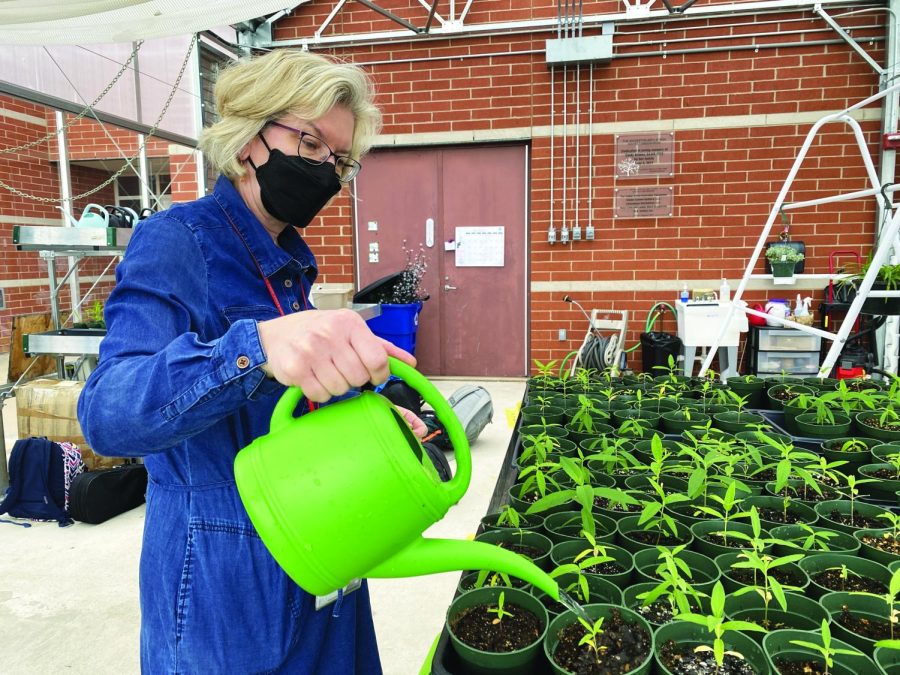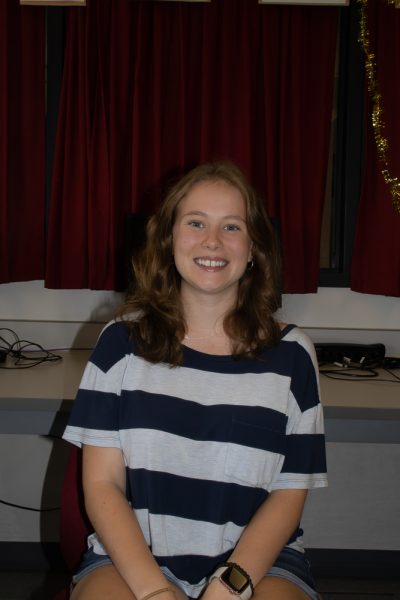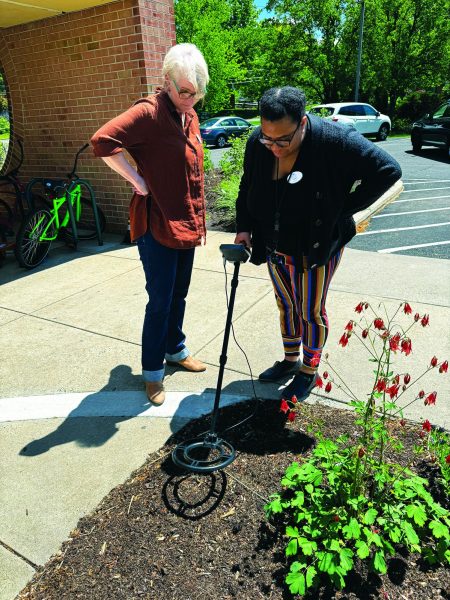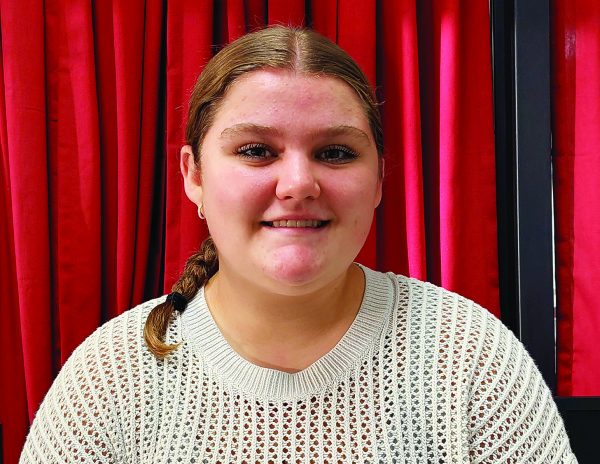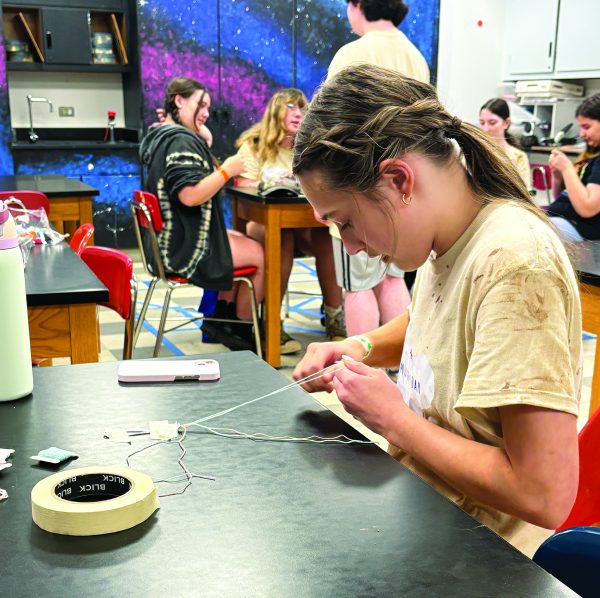SAVE clubs educate students on protecting environment
As Earth Day approaches, many people are looking for ways to protect the Earth. The SAVE and SAVE Jr. clubs are creating activities designed to help other students in the district learn, too.
Arrowhead photo by Melanie Vincent
Feed the butterflies…Watering the plants, SAVE co-adviser Kim Wilson cares for milkweed plants that will be replanted on the high school campus by Indian Valley Middle School students in May. SAVE has been taking care of the milkweed plants since November.
With environmental problems on the rise, many people in Souderton are looking for ways to protect the environment, along with educating other students about what they can do to help.
SAVE co-advisor Ian Burley believes it is very important to educate his students about what they can do to help the environment.
“If students today are going to be the citizens of tomorrow, these are the problems their generation is going to be faced with,” Burley said.
Similarly, SAVE Jr. advisor Suzanne Thomas thinks that environmental education should start at a young age.
“[Kids] are like sponges. They soak it up,” Thomas said.
Department of Environmental Protection air quality control group manager Jillian Gallagher said that there are other positives in teaching kids when they are young.
“If we teach them when they are young what they can do, hopefully they will continue it into their adult life,” Gallager said, “and they could influence and educate their parents.”
Burley and fellow SAVE co-advisor Kim Wilson have been planning an event to help educate middle school students in the district.
According to Wilson and Burley, there will be two groups of 25 students coming up to the high school in May.
SAVE plans to lead the students while they plant milkweed on the high school campus.
Milkweed is the only plant that monarch butterfly caterpillars eat.
“We can grow [milkweed] up, and then replant it outside and make a big patch of butterfly food,” Wilson said. “Then we can get kids on campus to have a look at that and why it’s important to have this type of food out there for butterflies.”
SAVE Jr. will also be hosting an event to educate kids about the environment.
According to Thomas, in May the SAVE Jr. club students will create 16 activities for kids ages 4-7.
The activities will include lessons like how bird beaks change and adapt, and how different establishments affect a river and its surroundings.
“A lot of them are hands-on activities, as we are dealing with a younger population and you want to keep them interested,” Thomas said.
While hands-on activities are important to teach children, Gallagher said, teaching by example is also extremely effective.
“Just experiencing and seeing the importance of behaviors like that will stick with the child for a long time,” Gallagher said.
According to Wilson, it is relatively simple for people to demonstrate living by example.
“Just get outside, let the Earth teach you,” Wilson said, “because the more you appreciate it, the more you’re going to want to save it.”
Wilson also believes that children are more open minded to the changes that need to happen.
“Changing infrastructure is going to be huge when it comes to climate change,” Wilson said, “but young people are more open to change.”
Another way to lead by example is to make an “Earth Day resolution” Gallagher said.
According to Gallagher, this can be something like trying to drive less, or even trying to eat less meat because the production of meat is one of the largest greenhouse gas contributors.

